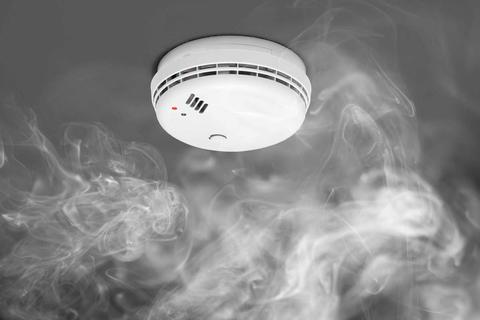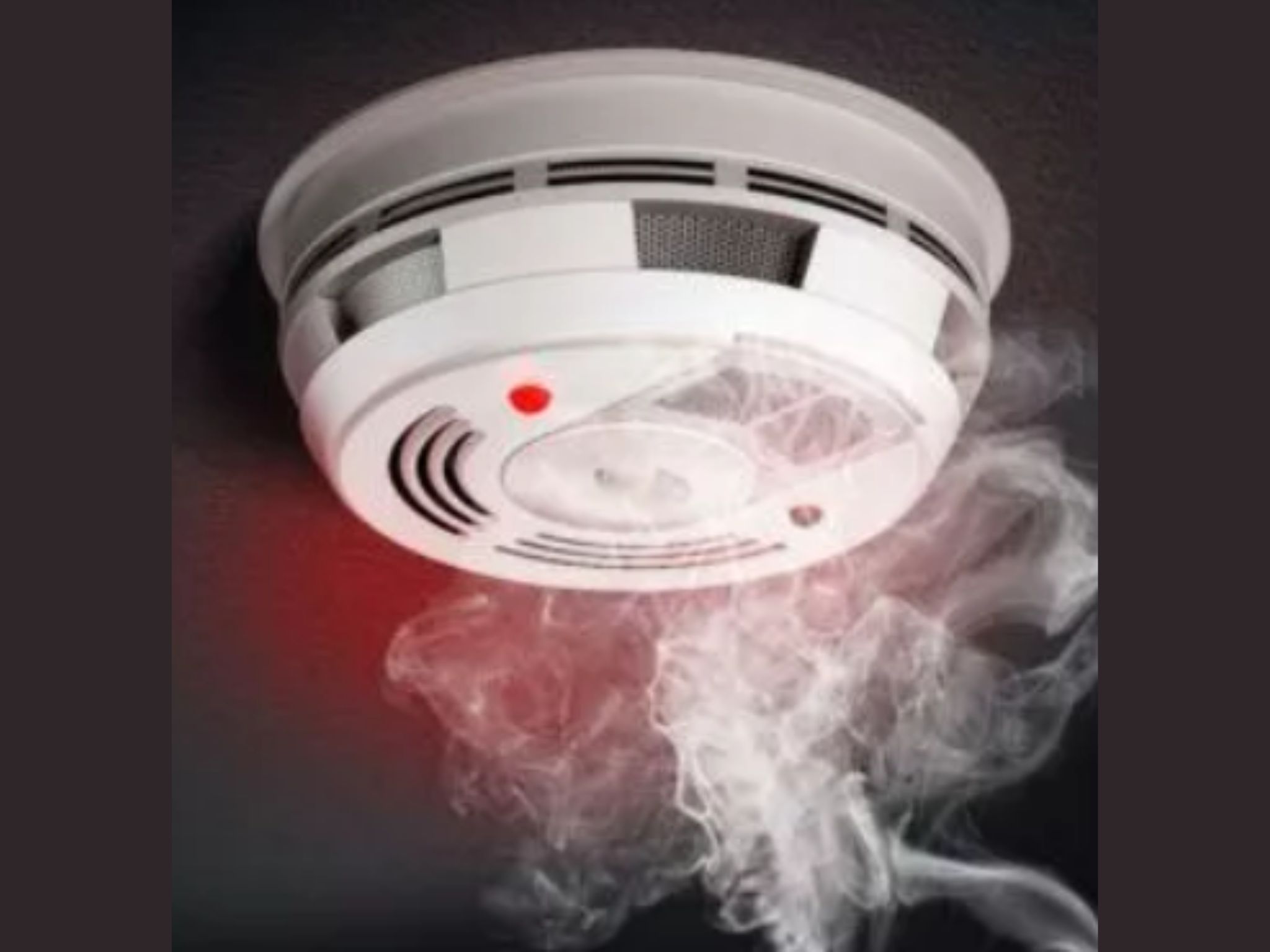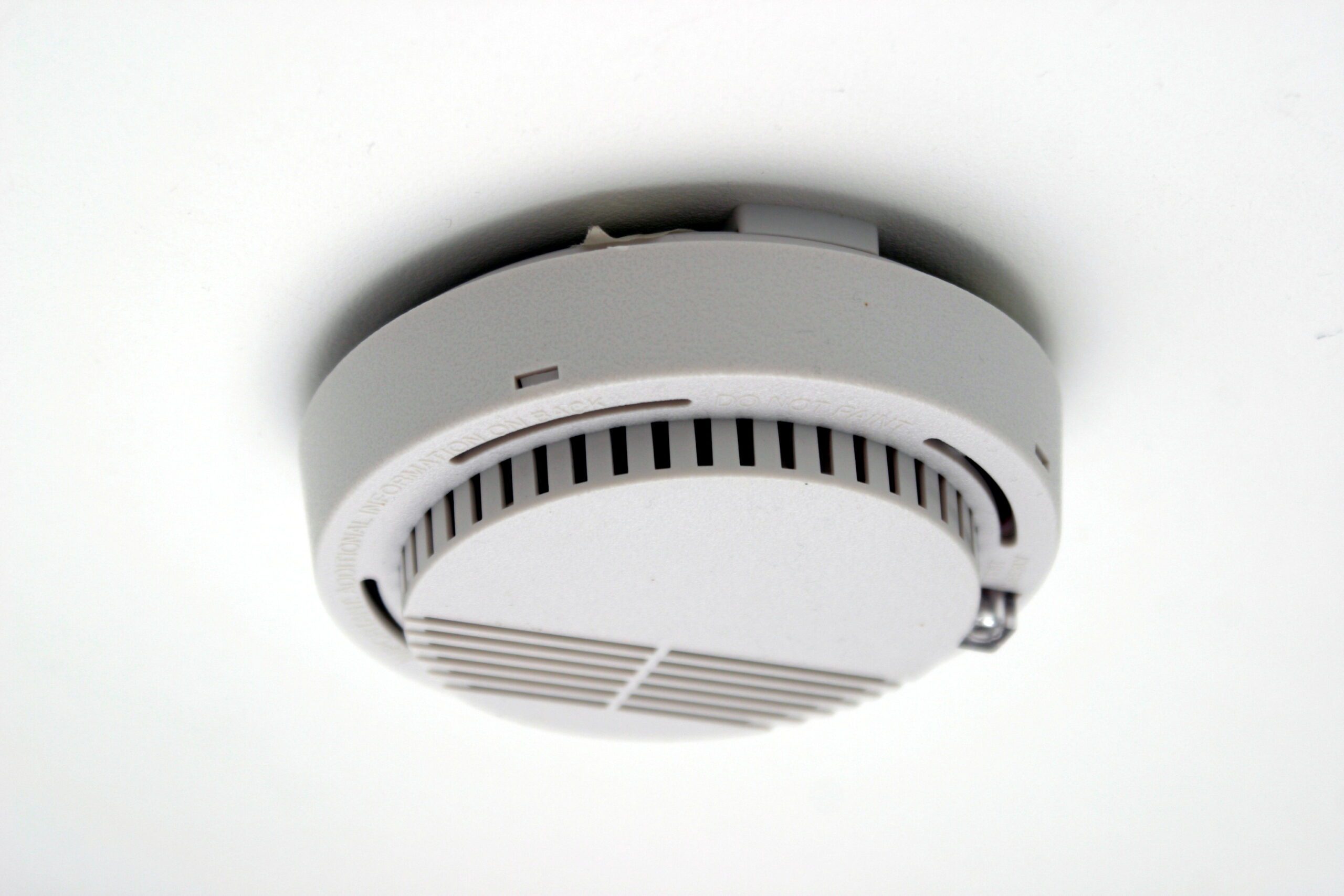A smoke alarm detects smoke particles in the air. It provides an early warning of a potential fire.
Smoke alarms are essential safety devices in homes and buildings. They help prevent fire-related injuries and fatalities. These devices detect smoke through either ionization or photoelectric sensors. Smoke Alarm Detect Ionization sensors are better at detecting fast-flaming fires. Photoelectric sensors excel at identifying smoldering, slow-burning fires.
Many modern smoke alarms combine both types for comprehensive protection. Regular maintenance, such as changing batteries and testing the device, ensures reliability. Installing smoke alarms on every level of your home, including inside bedrooms, maximizes safety. Early detection allows more time to evacuate and call emergency services, potentially saving lives and property. Invest in quality smoke alarms for peace of mind.

Credit: www.nist.gov
Introduction To Smoke Alarms
Smoke alarms are essential for every home. They save lives by detecting smoke early. This early detection allows people to escape from fire hazards quickly. Understanding how smoke alarms work helps you appreciate their importance.
Purpose And Importance
The primary purpose of a smoke alarm is to detect smoke. This detection warns occupants of a potential fire. Early warning is critical in preventing injury or death. Smoke alarms are vital in homes, schools, and workplaces.
According to fire safety experts, smoke alarms reduce the risk of dying in a fire by half. They are cost-effective and easy to install. Regular maintenance ensures they work properly.
Basic Components
Smoke alarms have several key components:
- Sensor: Detects smoke particles in the air.
- Alarm: Emits a loud sound to alert occupants.
- Power Source: Batteries or hardwired into the electrical system.
- Test Button: Allows users to check functionality.
There are two main types of smoke sensors:
- Ionization Sensors: Better at detecting fast, flaming fires.
- Photoelectric Sensors: Better at detecting slow, smoldering fires.
Some smoke alarms combine both sensors for maximum protection. Dual-sensor alarms provide better coverage against various fire types.
| Component | Function |
|---|---|
| Sensor | Detects smoke particles |
| Alarm | Alerts occupants with sound |
| Power Source | Provides energy to the alarm |
| Test Button | Checks alarm functionality |
Regular maintenance includes testing the alarm monthly. Replace batteries yearly or as needed. Replace the entire smoke alarm every 10 years.
Understanding these components ensures your home is well-protected. Proper installation and maintenance keep your family safe.
Types Of Smoke Alarms
Understanding the types of smoke alarms can help you choose the best one for your home. Each type detects different kinds of fires. Knowing how they work can save lives and property. Below are the main types of smoke alarms.
Ionization Alarms
Ionization alarms are best at detecting fast-flaming fires. These fires spread quickly and produce little smoke. The alarm uses a small amount of radioactive material. This material ionizes the air, creating a current between two plates. When smoke enters, it disrupts this current. This triggers the alarm.
| Pros | Cons |
|---|---|
| Quick to detect fast fires | More false alarms from cooking |
| Inexpensive | Less effective for smoldering fires |
Photoelectric Alarms
Photoelectric alarms are better at detecting slow, smoldering fires. These fires burn slowly and create a lot of smoke. The alarm uses a light beam and a sensor. Smoke entering the chamber scatters the light. This triggers the sensor, setting off the alarm.
| Pros | Cons |
|---|---|
| Quick to detect smoky fires | It may be slower for fast fires |
| Fewer false alarms | More expensive |
Both types have their strengths. Using a combination of both types can provide the best protection.
Detection Mechanisms
Smoke alarms are essential for safety, and understanding their detection mechanisms helps you choose the right one. Different smoke alarms use various technologies to detect smoke. The two main methods are ionization and photoelectric sensing.
Ionization Process
Ionization smoke alarms detect small smoke particles, which are usually produced by flaming fires. The alarm contains a small amount of radioactive material, which creates an ionization chamber.
The chamber has two plates and a small voltage. It generates a steady current. When smoke enters, it disrupts the flow of ions. The alarm senses this change and sounds the alert.
Advantages:
- Quick detection of fast-flaming fires
- Cost-effective and widely available
Disadvantages:
- Less effective for smoldering fires
- Can trigger false alarms from cooking
Photoelectric Sensing
Photoelectric smoke alarms detect larger smoke particles. These particles usually come from smoldering fires. The alarm has a light source and a light sensor. The light source shines a beam of light.
The sensor is placed at an angle to the light beam. In clear air, the light does not hit the sensor. When smoke enters, it scatters the light. The scattered light hits the sensor, triggering the alarm.
Advantages:
- Quick detection of smoldering fires
- Less prone to false alarms from cooking
Disadvantages:
- Can be slower to detect fast-flaming fires
- Usually more expensive
Choosing the right smoke alarm is crucial for home safety. Understanding ionization and photoelectric mechanisms can help you make an informed decision.
Common Causes Of Smoke
Smoke alarms are essential for home safety. They detect smoke from various sources. Understanding these causes helps you prevent fires. Here are some common causes of smoke.
Cooking Mishaps
Cooking is the leading cause of home fires. Burned food produces smoke that triggers alarms. Unattended pots and pans can overheat. Grease fires are also common. They start quickly and spread fast.
- Burned food
- Unattended cooking
- Grease fires
Electrical Malfunctions
Electrical issues often cause smoke. Faulty wiring can overheat and smolder. Overloaded circuits are dangerous. Damaged appliances can spark and catch fire.
| Cause | Description |
|---|---|
| Faulty wiring | Wires overheat and cause smoke |
| Overloaded circuits | Too many devices on one circuit |
| Damaged appliances | Old or broken devices may catch fire |
Dangerous Gases Detected
Smoke alarms are essential for home safety. They detect dangerous gases that can be deadly. Knowing which gases are detected can save lives.
Carbon Monoxide
Carbon monoxide (CO) is a silent killer. It has no smell, taste, or color. This gas comes from burning fuel in cars, stoves, and grills. High levels of CO can cause headaches, dizziness, and even death.
CO is especially dangerous at night. People can inhale it while sleeping and not wake up. Modern smoke alarms detect CO and alert you before it becomes deadly.
Other Harmful Gases
Smoke alarms also detect other harmful gases. These gases can come from different sources. Here are some examples:
- Methane – Found in natural gas leaks. It is highly flammable.
- Propane – Used in gas grills. It can cause explosions if not detected.
- Butane – Found in lighters and portable stoves. It is very dangerous in high amounts.
Smoke alarms can sense these gases and warn you. This gives you time to take action and stay safe.
| Gas | Source | Symptoms |
|---|---|---|
| Carbon Monoxide | Cars, stoves, grills | Headache, dizziness, death |
| Methane | Natural gas leaks | Explosion risk |
| Propane | Gas grills | Explosion risk |
| Butane | Lighters, stoves | Explosion risk |

Credit: www.ocwr.gov
Hidden Dangers In Homes
Smoke alarms are essential for home safety. They detect dangers that might be invisible. Understanding what they can sense helps keep your family safe.
Fire Hazards
Fires can start in many ways. Cooking accidents are common. Electrical issues are another source. Candles and heaters can also start fires. Smoke alarms sense the smoke from these fires. They alert you before the fire spreads.
| Fire Hazard | Source |
|---|---|
| Cooking | Stove, Oven |
| Electrical | Wiring, Outlets |
| Candles | Open Flame |
| Heaters | Portable Units |
Invisible Toxins
Some dangers are not visible. Carbon monoxide is a deadly gas. It has no smell or color. Smoke alarms with CO detectors can sense this gas. This can save lives.
- Carbon Monoxide (CO)
- Other gases from fires
Other gases from fires can also be dangerous. Smoke alarms help detect these as well. They provide early warnings, helping you escape in time.

